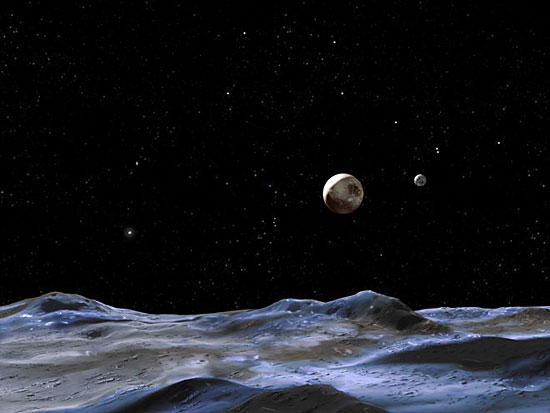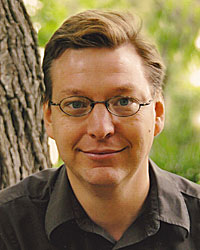Pluto-killing scientist talks
February 29, 2012

Poor little Pluto never saw it coming. Find out why Dr. Michael Brown pulled the plug on the one-time 9th planet.
Still miffed that Pluto’s not a planet anymore? The man responsible is coming to the county’s Natural History Museum to give his side of the story.
“I‘m ready for them to come in with rocks and throw their drinks and attack,” said Dr. Michael Brown, who’ll appear at the museum on Friday, March 2. “I know they are all sad about it.”
In 2005, Brown announced the discovery of Eris, an object larger than Pluto at the edge of the solar system. His team’s findings led the International Astronomical Union to revise the definition of “planet.” This demoted Pluto to a “dwarf planet,” causing an uproar among many who knew and loved the one-time ninth planet.
“Some of it is just funny,” Brown said of the backlash. “And some of it is just downright mean, which is almost funnier.”
Brown is a professor of planetary astronomy at the California Institute of Technology. His work has been featured in publications including the New York Times, The New Yorker and Discover magazine. In 2006, he was honored as one of Time Magazine’s “100 Most Influential People” and one of Los Angeles Magazine’s “Most Powerful Angelenos” for his discoveries. That same year, Wired Magazine named him one of the “Top Ten Sexiest Geeks.”
He told Wired in 2010 that even his 5-year-old daughter was perturbed by Pluto’s planetary downgrade. “She has learned from general discussions that I killed Pluto and that killing is bad. Therefore, I’ve done something bad, and so she’s kind of mad at me,” he said.
Brown, who’s also the author of the book “How I Killed Pluto and Why It Had It Coming,” hopes that by the end of the discussion people will be ready to lay down their torches and pitchforks.
“One of the things that will surprise people the most is how reasonable the decision to demote Pluto was,” he said. “I think they will leave and decide they should be mad at Pluto, not me.”
Brown’s talk, called “Why Pluto Had to Die,” starts at 6:30 p.m. It’s part of the museum’s “First Fridays” series combining science and innovative music. The programs aim to attract young and not-so-young adults to the museum, even though the field trips of their youth may be long past.
The tunes kick in at 5:30 p.m. with KCRW DJs Anthony Valadez and Chuck P. At 8 p.m. EMA takes the stage, combining a free jazz lyrical style with fuzzy, droning guitar rock reminiscent of Sonic Youth.
Zola Jesus, the night’s headliner, is a self-made, up-and-coming electronic pop musician at the age of 22. Her compositions pair trance-inducing electronic sounds with haunting, almost-mournful vocals. She goes on at 9:15 p.m. amid the dioramas of the North American Mammal Hall.
General admission to all of it is $18, and free for Universityof Southern California students. The museum is located at 900 Exposition Boulevard in Los Angeles. Parking is $10, or plan to get there with Metro. While advance tickets are sold out, don’t worry—same day tickets will be available at the south entrance starting at 5 p.m.
Posted 2/29/12















 405 bridge work causes a stink
405 bridge work causes a stink